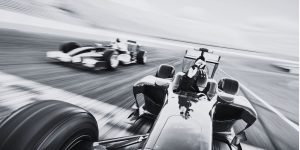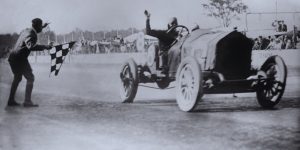What Happened On May 13th?
On May 13, 1950, the Silverstone Circuit in Northamptonshire, England, hosted the inaugural race of the Formula One World Championship season. Being the first event in history, this tradition mesmerized millions. As time went on, it would evolve into one of the most prestigious and widely followed motorsport series in the world.
A Bomb Station?
In the aftermath of World War II, Britain found itself rebuilding and rejuvenating. The war had left deep scars, but it also allowed for an era of innovation.
Among the industries experiencing a resurgence was motor racing, a beloved sport that had been paused during the conflict. The Royal Automobile Club recognized the need for a premier racing series and led the initiative to launch a world championship. Silverstone, a former Royal Air Force bomber station, became the chosen venue for this race.
Enthusiasts converted the circuit to host races, using hay bales and oil drums to set up the course. Despite its makeshift origins, Silverstone quickly gained a reputation for its challenging layout and high-speed corners.
Who Competed?
The 1950 season attracted a diverse array of talent, both behind the wheel and in the pits. Notable among the drivers were Italy’s Giuseppe Farina, Argentina’s Juan Manuel Fangio, and Britain’s Reg Parnell.
Farina, driving for Alfa Romeo, was a seasoned racer with a reputation for his technical skill and strategic acumen.
Fangio, whose career would later be decorated with five world championships, was known for his daring and adaptability. However, his fame came with controversy.
These drivers, along with others, brought a mix of experience, youth, and ambition that set the tone for the season.

Teams like Alfa Romeo, Ferrari, and Maserati brought their engineering prowess to the fore, each vying for dominance. Alfa Romeo’s 158, also known as the “Alfetta,” was a formidable machine, boasting a supercharged 1.5-liter engine capable of producing around 350 horsepower. This car, coupled with the skill of its drivers, set the benchmark for performance and reliability.
The Silverstone Grand Prix
The race attracted an enthusiastic crowd, including notable attendees such as King George VI. The atmosphere was electric, charged with the anticipation of witnessing history in the making. The race format consisted of 70 laps around the 4.649-kilometer circuit, testing the physical limits of both man and machine.
From the start, it was clear that Alfa Romeo held an advantage. Giuseppe Farina, Juan Manuel Fangio, and Luigi Fagioli, and Juan Manuel Fangio, all driving for Alfa Romeo, dominated the race.

Farina took an early lead and maintained it with a blend of precision and speed. His driving was a masterclass in control and efficiency, as he navigated the challenging circuit with ease.
However, every race has its drama. Several competitors were forced to withdraw due to mechanical failures and crashes.
Despite these challenges, Farina crossed the finish line first, followed by his teammates Fagioli and Reg Parnell. This triumvirate of Alfa Romeos on the podium displayed the team’s dominance and set the tone for the rest of the season.
What Happened Next?
The 1950 season consisted of seven races, each contributing to the overall championship standings. After Silverstone, the championship moved to Monaco, where the narrow and twisting streets posed a different kind of challenge. Fangio, demonstrating his extraordinary adaptability, won the Monaco Grand Prix, showcasing his skill on one of the most demanding circuits in the world.
The Indianapolis 500, included in the championship but not typically associated with Formula One, added a unique element. While most European teams did not participate, it highlighted the global ambition of the championship.

The remaining races, held in Switzerland, Belgium, France, and Italy, were met with intense competition and varying fortune.
Farina Finds Fame
Giuseppe Farina’s consistent performances, including victories in Switzerland and Italy, ultimately secured him the title of the first Formula One World Champion. His triumph was a testament to his skill, determination, and the technological superiority of the Alfa Romeo 158.
On the other hand, Fangio, despite his brilliance, had to settle for second place. Thus, the first season set the stage for future battles between the two titans of the sport.
The Evolution of Formula One
Since the inaugural season, Formula One has undergone drastic transformations. Technological advancements have led to faster, safer, and more complex cars. The sport has expanded globally, with races held on every continent due to the fanbase that spans across the whole world.
Drivers have become international superstars, with the likes of Ayrton Senna, Michael Schumacher, and Lewis Hamilton becoming iconic names. Teams like Ferrari, McLaren, and Mercedes have built dynasties, pushing the boundaries of what is possible in automotive engineering and racing strategy.





